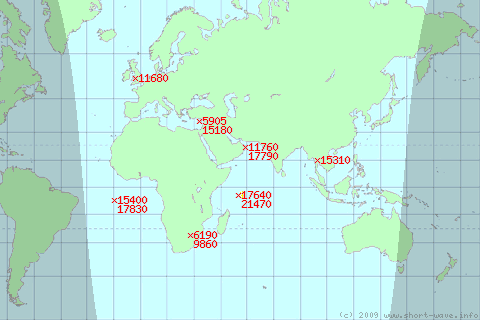Tuesday 17 February, 2009, 20:38 - Licensed
Posted by Administrator
My couple of previous posts concerning reception of BBC World Service English language programmes on short-wave in Europe led me to wondering whether there wasn't a more elegant solution to the problem of identifying which frequencies to tune to at any given time of the day.Posted by Administrator
As it happens, every 6 months, the majority of international broadcasters get together and sit down to negotiate and co-ordinate their HF frequency usage for the coming 6 months at a conference known as the High Frequency Co-ordination Conference. The resulting plans (know as the Winter and Summer seasons) are published on the web. So with a little ingenuity and a few spare hours, Wireless Waffle proudly presents:
* The 'find a frequency in a given language, for a particular broadcaster (or both) analysis tool' *
(catchy name isn't it?!)
It works like this: You can select broadcasts in a particular language, or by a particular broadcaster in which case you will be presented with a list of transmissions currently on-air (or on-air at a time you select) today for that broadcaster together with a map of the world showing where those frequencies are being transmitted from. Using this list you can try tuning to those transmitters most local to you (or for fun those more distant) to see what you can hear.
Alternatively you can select a broadcaster AND a language in which case you will receive a list of all frequencies and times for that broadcaster in that language for today, highlighting those which are currently on-air with a map showing where those frequencies which are on-air are being broadcast from. It sounds more complicated than it is - go and try it!

To help, regions in daylight and darkness are also shown. Generally speaking if you are in an area of darkness, look for stations also in darkness which are transmitting on low frequencies (say 10 MHz - 10000 kHz - or less). If you are in an area of daylight, look for frequencies also in daylight (over 10 MHz or so).
Happy listening.
add comment
( 1255 views )
| permalink
| 



 ( 2.9 / 93395 )
( 2.9 / 93395 )




 ( 2.9 / 93395 )
( 2.9 / 93395 )

